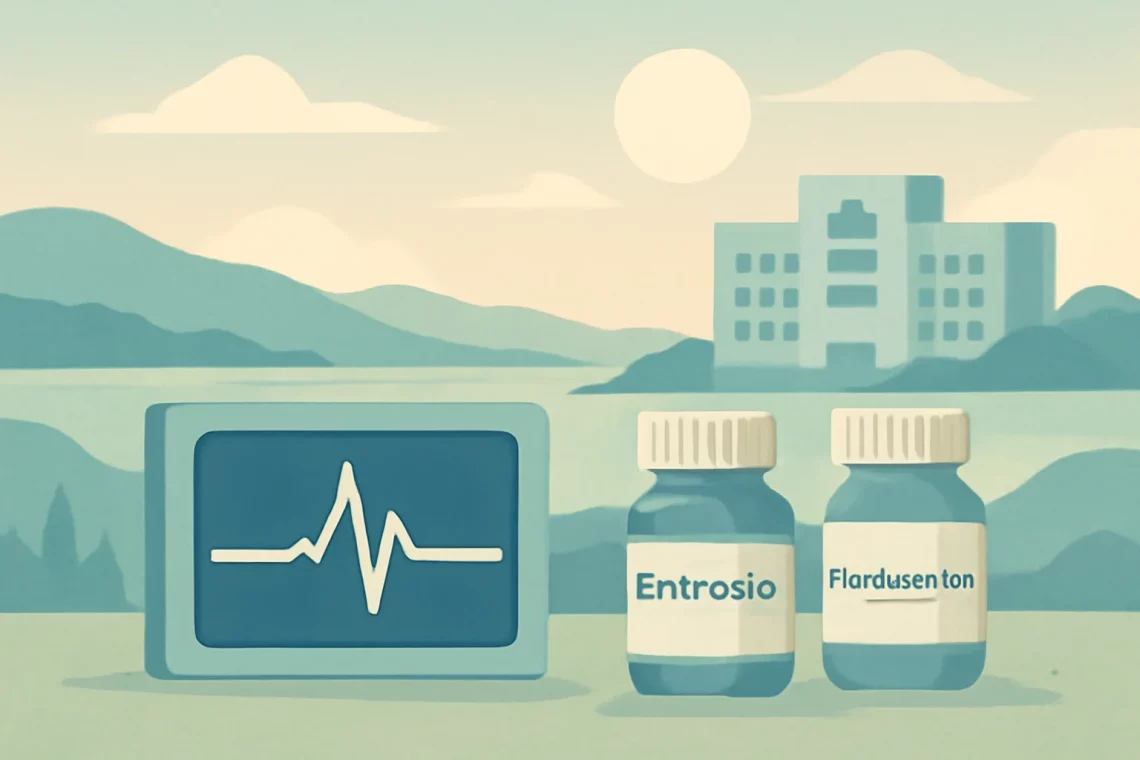
Entresto vs Candesartan: Which Heart Failure Treatment Is Better?
Managing cardiovascular health is crucial for overall well-being, and a range of medications are available to help individuals manage conditions such as hypertension and heart failure. Among these medications, Entresto and Candesartan have gained prominence for their effectiveness in treating heart-related issues. Both of these drugs are designed to lower blood pressure and reduce the strain on the heart, but they work in different ways and have distinct profiles.
Entresto, a combination of sacubitril and valsartan, operates by inhibiting a specific enzyme that breaks down natriuretic peptides, which are hormones that help regulate blood pressure and fluid balance. This dual action not only lowers blood pressure but also offers additional benefits for heart failure patients by promoting vasodilation and diuresis. On the other hand, Candesartan is an angiotensin II receptor blocker (ARB) that primarily focuses on blocking the action of angiotensin II, a hormone that constricts blood vessels and increases blood pressure.
Patients and healthcare providers often weigh the benefits and drawbacks of each medication in the context of individual health needs. Understanding the mechanisms, side effects, and efficacy of these two medications can aid in making informed choices about heart health management.
Understanding Entresto: Mechanism and Benefits
Entresto is a unique medication that combines two active ingredients: sacubitril and valsartan. Sacubitril functions as a neprilysin inhibitor, which prevents the breakdown of natriuretic peptides. These peptides play a significant role in regulating blood volume and pressure, promoting vasodilation, and mitigating fluid overload, which is common in heart failure patients.
This dual-action mechanism allows Entresto to provide comprehensive benefits for those suffering from heart failure, especially those with reduced ejection fraction. By reducing the strain on the heart, Entresto can help improve symptoms such as shortness of breath, fatigue, and fluid retention. Clinical trials have shown that Entresto can significantly reduce the risk of cardiovascular death and hospitalizations due to heart failure when compared to traditional therapies.
However, like any medication, Entresto comes with potential side effects. Commonly reported adverse effects include hypotension, hyperkalemia, and renal impairment. Patients must be monitored regularly to ensure that their potassium levels and kidney function remain within safe limits. Additionally, because sacubitril can interact with certain medications, it’s crucial for patients to inform their healthcare providers about all the medications they are taking.
Entresto is typically prescribed for patients who have been diagnosed with heart failure and have difficulty managing their symptoms with standard treatments. It is essential for patients to follow their healthcare provider’s instructions regarding dosage and to report any concerning symptoms promptly.
Candesartan: An Overview of Its Uses
Candesartan is an angiotensin II receptor blocker (ARB) that is primarily used to treat hypertension and heart failure. Angiotensin II is a potent vasoconstrictor, meaning it narrows blood vessels and raises blood pressure. By blocking the receptors that angiotensin II binds to, Candesartan helps to relax blood vessels, thereby lowering blood pressure and reducing the workload on the heart.
One of the significant advantages of Candesartan is its effectiveness in managing high blood pressure in patients who may not tolerate other antihypertensive medications. It can be particularly beneficial for individuals with conditions such as diabetes, where kidney protection is also a concern. Clinical studies have demonstrated that Candesartan can significantly reduce the risk of stroke, heart attack, and other cardiovascular events.
Patients generally tolerate Candesartan well, with side effects being relatively mild compared to other blood pressure medications. Common side effects may include dizziness, fatigue, or mild gastrointestinal disturbances. Serious side effects, though rare, can include renal impairment and hyperkalemia, similar to Entresto.
Candesartan is often prescribed as part of a comprehensive treatment plan for managing hypertension or heart failure. It is essential for patients to adhere to their prescribed regimen and maintain regular follow-up appointments to monitor their blood pressure and kidney function.
Comparative Effectiveness: Entresto vs. Candesartan
When comparing Entresto and Candesartan, it is crucial to consider their respective roles in treating heart failure and hypertension. While both medications are effective in lowering blood pressure, their mechanisms of action and the populations they serve can differ significantly.
Entresto is particularly tailored for treating heart failure with reduced ejection fraction, providing benefits that extend beyond mere blood pressure reduction. Its ability to promote diuresis and enhance cardiac function makes it a preferred choice for many clinicians when managing this specific condition. In clinical studies, Entresto has demonstrated superior outcomes in terms of reducing hospitalizations and mortality rates associated with heart failure.
In contrast, Candesartan serves a broader role in managing hypertension and can be an excellent choice for patients who may not have heart failure but require effective blood pressure control. Its mechanism as an ARB makes it suitable for a wide array of patients, including those with renal complications.
Ultimately, the choice between Entresto and Candesartan will depend on individual patient profiles, including their specific health conditions, other medications they may be taking, and their overall treatment goals. Healthcare providers will often assess the potential benefits and risks associated with each medication to tailor a treatment plan that best suits the patient’s needs.
Potential Side Effects and Considerations
Both Entresto and Candesartan are generally well-tolerated, but they do come with potential side effects that patients should be aware of. Understanding these side effects can lead to better adherence to treatment and improved outcomes.
Entresto’s side effects can include hypotension, which is particularly concerning for patients who may already have low blood pressure. Hyperkalemia, or elevated potassium levels, can also occur, necessitating regular monitoring of blood tests to ensure that potassium levels remain stable. Patients with a history of renal impairment should approach Entresto with caution, as the medication can affect kidney function.
Candesartan, while generally well-tolerated, can cause dizziness and fatigue, especially when initiating treatment or adjusting dosage. Similar to Entresto, it carries a risk of hyperkalemia and renal impairment. Patients should be advised to stay hydrated and to report any unusual symptoms to their healthcare provider.
Both medications require careful consideration of their interactions with other drugs, particularly diuretics and medications that affect renal function. Patients should maintain open communication with their healthcare providers regarding all medications they are taking, including over-the-counter drugs and supplements.
Overall, while both Entresto and Candesartan can be effective in managing heart-related conditions, the choice between the two should be made in consultation with a healthcare professional who understands the patient’s unique health profile.
**Disclaimer:** This article is for informational purposes only and does not constitute medical advice. Always consult with a healthcare provider for medical advice and treatment options related to your specific health condition.




